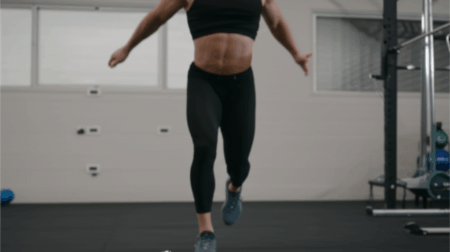The world of fitness is constantly buzzing with new trends, promising quick and effective ways to get in shape. Among the latest to capture attention is the “Japanese walking routine,” a method rooted in research and designed for efficiency. But does it live up to the hype? Here’s an exploration into what this routine entails, its potential benefits, and whether it’s worth incorporating into your fitness regime.
Understanding the Japanese Walking Routine
The Japanese walking routine, often referred to as Interval Walking Training (IWT) or the 3-3-3 method, is a structured exercise approach involving alternating periods of fast and slow-paced walking. Developed by Japanese researchers, including Professor Hiroshi Nose and Associate Professor Shizue Masuki at Shinshu University, this technique aims to improve cardiovascular and metabolic health.
The core of the routine consists of:
- High-Intensity Walking: Walking at approximately 70-85% of your maximum heart rate or peak aerobic capacity for three minutes. At this pace, you should be able to talk, but with some difficulty.
- Low-Intensity Walking: Walking at a relaxed pace, around 40% of your peak aerobic capacity, for three minutes. This should allow for comfortable conversation.
This cycle is repeated for about 30 minutes, typically four times a week. The method is considered a form of HIIT (High-Intensity Interval Training) but with less strenuous physical demands.
The Science Behind the Steps
Unlike some fleeting fitness fads, the Japanese walking routine is supported by scientific research. Studies have demonstrated several potential health benefits:
- Improved Cardiovascular Health: IWT strengthens the heart by increasing and lowering the heart rate through intervals, similar to HIIT. This can help lower blood pressure and improve overall heart efficiency, reducing the risk of heart disease.
- Increased Endurance and Stamina: Regularly switching between fast and slow walking trains your body to recover quickly and sustain longer periods of physical activity.
- Enhanced Metabolic Function: IWT can significantly improve insulin sensitivity and glucose metabolism.
- Fat Loss: The bursts of fast-paced walking increase calorie burn, while the recovery phase keeps the metabolism elevated. Studies have indicated that individuals practicing IWT lost more body fat compared to those doing only moderate-paced walking.
- Builds Lower Body Strength: The fast walking intervals engage muscles in the legs, glutes, and hips more intensively, strengthening the lower body, improving joint function, and enhancing balance.
- Supports Mental Well-being: The physical exertion followed by short recovery gives a sense of rhythm and achievement, potentially reducing symptoms of anxiety and depression and boosting mood and cognitive sharpness.
- Time-Efficient: IWT offers a time-efficient option for those struggling to reach the daily goal of 10,000 steps, which can take more than an hour.
- Suitable for Various Fitness Levels: Unlike regular walking, IWT introduces intensity variation that challenges the body to adapt and recover repeatedly, making it a low-impact yet powerful workout that is particularly suitable for all age groups, including seniors.
Anecdotal Evidence and Personal Experiences
Many individuals who have tried the Japanese walking routine report positive experiences:
- Increased Heart Rate: Some have noticed their heart rate was higher than it would be on their normal morning walk.
- Engaged Form: During the faster intervals, people focus on their form — keeping their core engaged, their torso up, and their arms swinging in time with their legs.
- Enjoyable Workout: Some find it a great way to mix things up.
- Comparable Results: Some have found that both walking methods produced similar results. Over time, the walk becomes easier, and one has to walk faster to ensure they reach the desired percentage of their peak aerobic capacity.
How to Incorporate Japanese Walking into Your Routine
If you’re interested in trying the Japanese walking routine, here’s how to get started:
- Warm-up: Begin with 5-10 minutes of light stretching and slow walking to prepare your muscles.
- Intervals: Alternate between 3 minutes of brisk walking (70-85% of your maximum heart rate) and 3 minutes of slow walking (about 40% of your peak aerobic capacity).
- Duration: Repeat the intervals for a total of 30 minutes.
- Cool-down: End with 5-10 minutes of cool-down exercises or stretches to bring your heart rate back to normal.
- Frequency: Aim to do this routine four times a week.
Tips for Success:
- Monitor Your Heart Rate: Use a fitness tracker or manually check your pulse to ensure you’re within the target heart rate zones during the intervals.
- Use the “Talk Test”: During the fast walking intervals, you should only be able to say a few words before needing to catch your breath.
- Stay Consistent: Consistency is key to seeing results. Make it a habit by incorporating it into your daily routine.
- Mix It Up: Add variety to your walks by changing your route or including inclines.
- Listen to Music: Walking while listening to music or a podcast can take your mind off the effort and help you maintain a rhythm.
- Track Your Progress: Keep a journal or use a fitness tracker to monitor your sessions and progress.
- Start Slowly: If you can’t do 30 minutes when you first start, that’s fine. Choose a goal that works for your fitness level.
Is It Worth the Hype?
The Japanese walking routine appears to be a worthwhile fitness trend. It’s backed by science, time-efficient, and suitable for various fitness levels. While it may not be a magic bullet for weight loss or overall fitness, it offers numerous potential benefits, including improved cardiovascular health, increased endurance, and enhanced metabolic function.
Considerations:
- Consistency is Crucial: The benefits are most likely to be seen with regular practice.
- Not a Replacement for All Exercise: While IWT is a great addition to a fitness routine, it shouldn’t be the only form of exercise. Incorporating strength training and other activities is important for overall health.
- Individual Results May Vary: Factors such as age, genetics, and lifestyle can influence the results you experience.
Beyond the Physical: Nanakorobi Yaoki
In addition to the physical aspects, it’s worth noting the philosophical underpinnings that resonate with the Japanese approach to health and wellness. The concept of “Nanakorobi Yaoki” (七転八起), which translates to “fall down seven times, get up eight,” embodies the spirit of perseverance and resilience. This mindset encourages individuals to view setbacks as opportunities for growth and self-improvement, aligning with the continuous cycle of learning and adaptation promoted by the interval walking routine.
Other Walking Workouts
Beyond the Japanese Walking Method, other walking workouts have gained popularity, each with its own unique approach:
- 12-3-30 Workout: This treadmill workout involves setting the incline at 12, the pace at 3 miles per hour, and walking for 30 minutes.
- 6-6-6 Walking Trend: This involves walking for 60 minutes a day, either at 6 a.m. or 6 p.m., with a 6-minute warm-up and 6-minute cool-down.
- Silent Walking: Focuses on mindfulness and disconnecting from external stimuli while walking.
- Fartlek Walking: Combines bursts of high-intensity walking with periods of jogging or running.
Conclusion
The Japanese walking routine offers a science-backed, time-efficient way to boost your fitness and well-being. Its focus on interval training provides a challenging yet accessible workout suitable for various fitness levels. While individual results may vary, the potential benefits, combined with the philosophical emphasis on perseverance, make it a fitness trend worth exploring. So, lace up your walking shoes and take those first steps towards a healthier, more resilient you.







